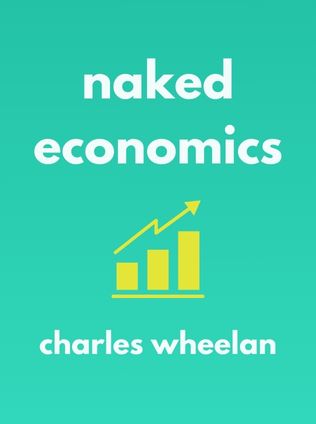
Naked Economics
Undressing the Dismal Science
By Charles J. Wheelan
Published 01/2002
About the Author
Charles Wheelan is a celebrated economist, author, and speaker known for his ability to demystify complex economic concepts for a general audience. With a background in public policy and economics, Wheelan has contributed to several esteemed publications, and his works often bridge the gap between academic theory and real-world application. His book, "Naked Economics: Undressing the Dismal Science", is particularly notable for its engaging and accessible approach to explaining the fundamentals of economics. Wheelan's writing style is characterized by its clarity, wit, and ability to relate economic principles to everyday life, making it a valuable resource for readers of all backgrounds.
Main Idea
The central theme of "Naked Economics" is to simplify the intricate and often intimidating field of economics, making it understandable and relatable for everyone. Wheelan achieves this by stripping away the heavy jargon and complex mathematics that often accompany economic discussions, focusing instead on the logical and intuitive aspects of economic theory. He emphasizes the importance of incentives in shaping human behavior and economic outcomes, illustrating how markets function and how governments can effectively intervene to promote a healthy economy. The book also delves into financial markets, international trade, and the factors that contribute to economic growth, offering readers a comprehensive overview of the forces that drive the global economy.
Table of Contents
- Introduction to Markets
- Prices and the Role of Supply and Demand
- The Power of Incentives
- The Role of Government in the Economy
- Understanding Financial Markets
- Measuring Economic Health
- The Causes and Effects of Recessions
- International Economics and Trade
- The Impact of Globalization on Developing Nations
Introduction to Markets
Markets are the backbone of any economy, acting as the platform where buyers and sellers meet to exchange goods and services. In a capitalist market, resources are allocated efficiently through the interaction of supply and demand, which helps direct resources to their most productive uses. This not only maximizes utility for individuals but also enhances the overall well-being of society by fostering innovation, creating jobs, and increasing the availability of goods and services.
Wheelan likens the market to an intricate web of transactions, where each decision made by a buyer or seller contributes to the broader economic landscape. He explains that the beauty of markets lies in their ability to self-regulate, adjusting prices and production levels in response to changes in supply and demand. This dynamic interaction ensures that resources are not wasted and that consumers' needs are met in the most efficient way possible.
“A market is a collection of billions of separate transactions that form a complex economy in which people can earn and spend money to fund their lives.” - Charles Wheelan
Prices and the Role of Supply and Demand
Prices are the signals that guide the behavior of buyers and sellers in a market. They reflect the balance between supply—the amount of a good or service available—and demand—the desire of consumers to purchase it. When supply and demand are in equilibrium, the market price stabilizes at a level where the quantity supplied matches the quantity demanded. However, prices are not static; they fluctuate in response to changes in market conditions, such as shifts in consumer preferences, technological advancements, or external shocks like natural disasters.
Wheelan emphasizes the importance of understanding how prices work, as they are the key to grasping how markets function. For example, if a product is in short supply but high demand, the price will rise, signaling to producers that there is an opportunity to profit by increasing production. Conversely, if there is an oversupply of a product with little demand, the price will fall, prompting producers to cut back on production or exit the market altogether.
Sign up for FREE and get access to 1,400+ books summaries.
You May Also Like
Rich Dad Poor Dad
What the Rich Teach Their Kids About Money - That the Poor and Middle Class Do Not!
By Robert T. KiyosakiFreakonomics
A Rogue Economist Explores the Hidden Side of Everything
By Steven D. Levitt and Stephen J. DubnerI Am Malala
The Story of the Girl Who Stood Up for Education and Was Shot by the Taliban
By Malala YousafzaiFactfulness
Ten Reasons We're Wrong About the World – and Why Things Are Better Than You Think
By Hans Rosling



















